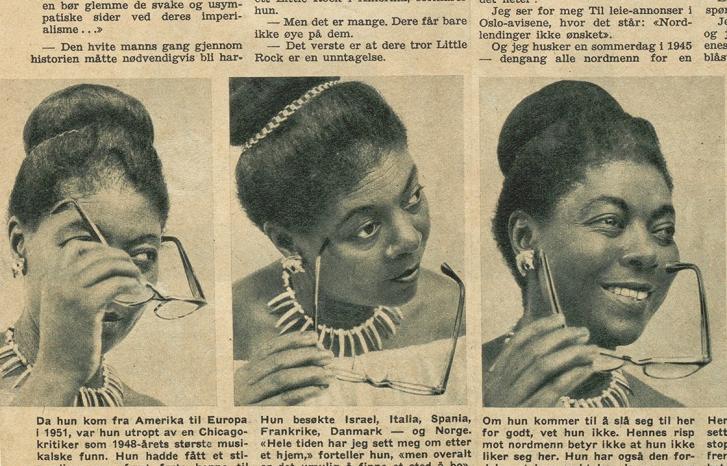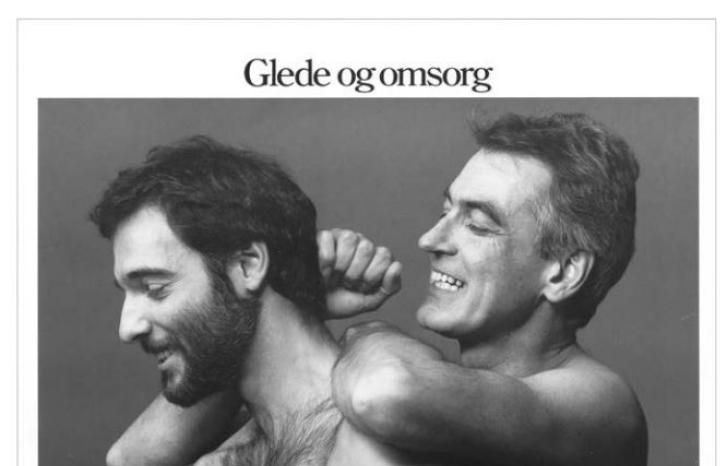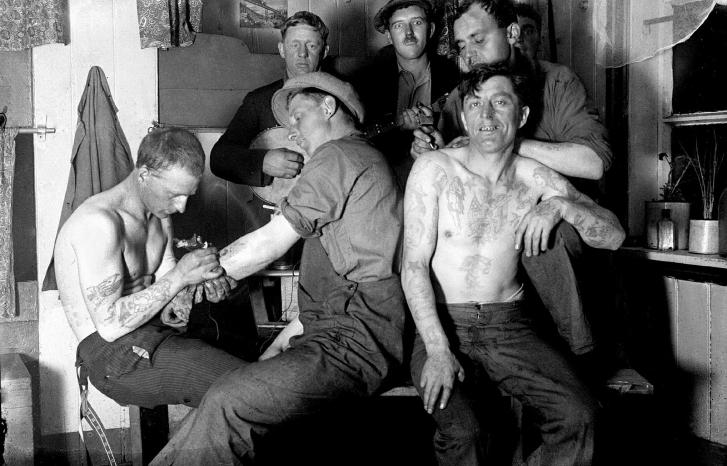The period between 1906 and 1911 is described as an ‘explosion of moral panic’ in Copenhagen’s history, driven by sexual and erotic relations between men, and occasionally between women.
This was triggered by the ‘Great Morality Case’ (Den store Sædelighedssagen) of 1906, which was the largest trial in Denmark’s history involving sex between men. A total of 14 men were on trial, nine of whom were members of society’s elite.
The prelude was the arrest of two young boys who, when questioned by the police, admitted that they were involved in prostitution and that their clients were men from the bourgeoisie.
The trial exposed a homosexual subculture in Copenhagen, in which male prostitution played a prominent role.
The case sparked a great deal of public debate about how the authorities should regulate sexual relationships between people of the same sex, and these discussions went on to pave the way for the decriminalisation of homosexuality in 1930.
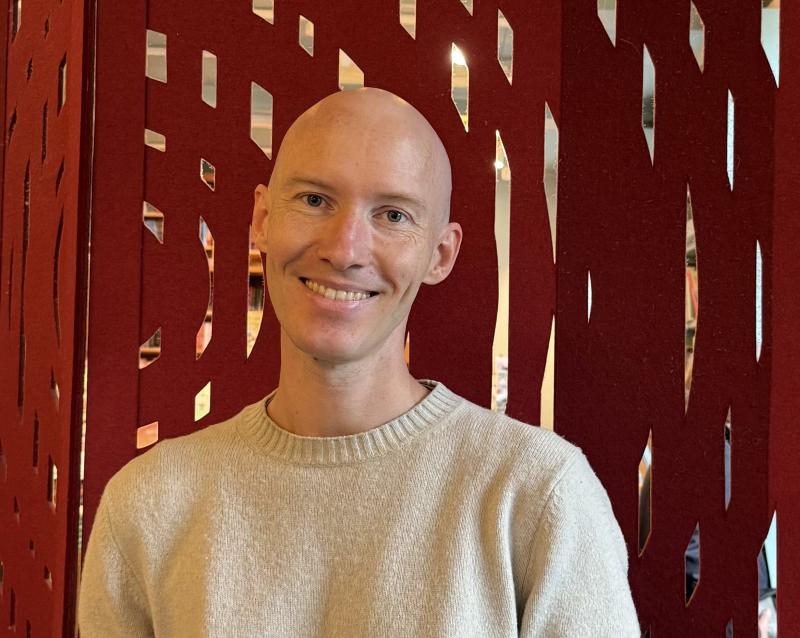
On 15 October, Niels Nyegaard, senior lecturer at the Centre for Gender Research at the University of Oslo, launched the book Perverse forbrydere og gode borgere (Perverse criminals and good citizens) at Litteraturhuset in Oslo.
The book is based on Nyegaard’s doctoral thesis, which examines how citizenship and sexuality are connected to the homosexual scandals in Copenhagen between 1906 and 1911.
Kilden magazine had a chat with Nyegaard after the book launch.
"Homosexuality and heterosexuality are modern constructs of sexuality"
Citizenship in modern society
Denmark became a constitutional monarchy in 1849, a democracy with elected parties in the Rigsdag parliament. The king’s power was defined and limited by a new constitution, while much of the legislative and executive authority was transferred to the people.
However, the right to vote was limited to men who were financially independent and had their own household, while women and men without property were not eligible to vote until 1915.
“Men who had sex with men were not citizens with the right to vote and similar privileges. This was because sex between men was a criminal offence back then, referred to as ‘a crime against nature’,” Nyegaard explains.
According to him, ‘citizenship’ entails “the individual’s inclusion in the envisaged national community and the assignment of fundamental civil, political and social rights, as well as important duties”.
According to the suffrage rules of the time, only men with a clean criminal record were eligible to vote. If a man had sex with another man, he was, in principle, a criminal – at least if he had been convicted of such an offence – and was thus not worthy of the right to vote.
“The key issue regarding civil and legal rights was how eligibility for citizenship and its associated rights should be connected to sexual orientation and conduct.”
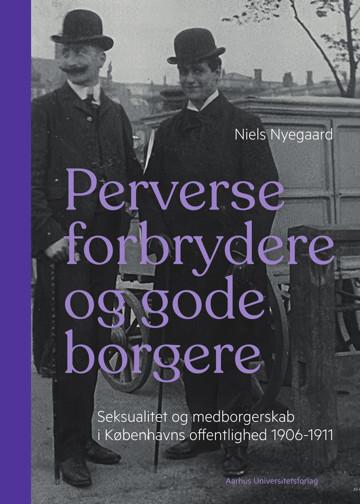
- "Perverse citizens and good citizens" is written by Niels Nyegaard, postdoctoral researcher at the Centre for Gender Research at the University of Oslo, and published by Aarhus universitetsforlag.
Nyegaard describes how the Danish public reacted to the growing number of morality cases in the early 1900s. The cases created an awareness of heterosexuality as a sexual orientation and as the societal norm. Homosexuality was regarded as deviant.
According to Runar Jordåen, researcher at the Norwegian Queer Archives, there was a similar Norwegian ‘homosexual scandal’ in Bergen.
Heterosexual citizenship
“My research is based on the premise that homosexuality and heterosexuality are modern constructs of sexuality. They can’t be directly applied to earlier historical periods or other cultures,” says Nyegaard.
He points out that this view is widespread and recognised in humanistic and social science research on sexuality. The concept of heterosexuality expresses a modern, medically informed understanding of sexuality as an inner, biological drive – where the norm is to desire the opposite sex, while it is abnormal is to desire the same sex, i.e. homosexuality.
This stands in contrast to pre-modern times, where sexuality was largely defined as moral conduct measured against the sanctity of marriage: Only sex within marriage was considered socially acceptable, and all other sexual relations were unacceptable and criminalised – including sex between men and women who weren’t married to each other, Nyegaard explains.
“The concept of heterosexuality thus became part of a, historically speaking, new way of understanding sexuality,” he says.
It emerged as a word and concept in Germany in 1869 and coincides with the birth of modern society – urbanisation, industrialisation, modern medicine, secularism, democracy and political parties, the researcher explains.
The term became known to the general public in the early 20th century through the coverage of the ongoing scandals in the Copenhagen newspapers.
Nyegaard argues that heterosexuality became a condition for citizenship in this society.
“I have identified a number of events in Denmark during this period where we can see Danish citizenship beginning to be linked to heterosexuality – understood as a modern concept and mindset.”
Homosexual scandals
Nyegaard refers here to, among other things, the ‘Hebron case’ and the ‘Eulenburg case’ which, according to the researcher, shook Denmark.
In the Hebron case, 50-year-old Edle Bransholm was accused of abusing and neglecting young girls in her care at one of the Inner Mission’s reformatory homes.
It was also alleged that she had established intimate ties and ‘perverse sexual relations’ with two female teachers at the home.
The Eulenburg case, on the other hand, unfolded at the royal court in Germany. A newspaper editor accused two of Kaiser Wilhelm II’s close friends of being homosexual. He believed that one in particular had gained too much power by virtue of his close friendship with the kaiser, and used accusations of homosexuality to have him removed from his position at the royal court.
These cases were mainly covered by the workers’ press and the sensationalist gossip magazines. There were far fewer articles in the bourgeois and conservative press, which were generally more measured in tone.
Newspapers, politicians and other influential voices politicised the scandals. The workers’ press wove the cases into broader debates on voting rights, the welfare state versus private poor relief, and class differences in society.
“Virtually all the newspapers unanimously agreed that homosexuality was an un-Danish phenomenon that belonged in the Orient, not in Denmark,” says Nyegaard.
Racialisation and social Darwinism were new ideas that became part of this discourse.
The ‘perverted’ upper class
“Copenhagen's workers’ press used the scandals to discredit the politically privileged men who belonged to the city’s bourgeoisie by accusing them of being homosexual and sexually perverse.”
At the time, the newspapers were full of stories about older wealthy men – homosexual men from the city’s bourgeoisie – who had ‘seduced’ young working-class boys.
“The word ‘seduced’ was much used in the newspapers of the time. It describes an idea that otherwise heterosexual and healthy young men could be seduced into a homosexual orientation by older men. In other words, their sexuality was manipulated by adult men.”
“The workers’ newspapers also used ‘upper-class perversions’ to support their arguments. The aim being to strengthen the working class’s case for full political rights by depicting them as sexually normal, i.e. heterosexual,” says Nyegaard.
Model citizens
Nyegaard notes that there were dissenting voices in the public debate on homosexuals’ right to citizenship even at the beginning of the 20th century.
“Some newspapers, including the workers’ press, pointed out that homosexuals were entitled to a fair trial like other citizens.”
This position was also taken by homosexuals, including those charged in the court cases. A few spoke out publicly, arguing that homosexuals could be good model citizens, despite their sexuality.
“But we should be cautious about claiming that these voices had a groundbreaking impact. There was consensus that homosexuals should preferably keep their homosexuality hidden from the outside world and only socialise with like-minded partners within the four walls of their homes,” says Nyegaard.
According to him, there was no radical challenge to the growing connection being made between citizenship and heterosexual identity.
“In recent decades, the social position of gays and lesbians has changed significantly”
Heterosexual privilege
“In recent decades, the social position of gays and lesbians has changed significantly,” says Nyegaard. “They have gone from being social outsiders to full citizens with rights to equality, marriage and reproduction.”
In the Nordic countries, this change began in earnest with the introduction of registered partnerships in Denmark in 1989.
“The developments during these decades have been the focus of considerable research. Many studies have investigated both the reasons behind them and how we should understand their significance,” according to Nyegaard.
“The question is whether this represents a positive extension of fundamental civil rights, or whether such rights should primarily be seen as cultural assimilation. In other words, gays and lesbians are becoming more and more like the heterosexual majority population – and are losing their sexual-political radicalism and subcultural characteristics.”
The researcher wonders whether it may be a case of both.
“I have followed these research discussions with great interest, but believe that some questions remain unanswered.”
Nyegaard notes that all the discussions are based on the underlying idea that gays and lesbians have now been included in a citizenship that is already heterosexual.
“What is missing here is an explanation of how citizenship became a heterosexual privilege in the first place, one that initially excluded homosexuals. This is the question I try to elucidate in my book.”
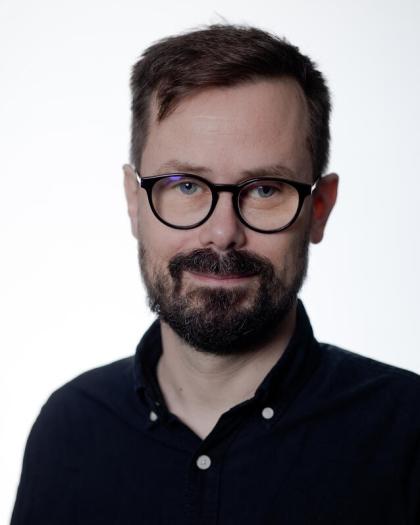
An important contribution
Runar Jordåen, historian at the Norwegian Queer Archives at the University of Bergen Library, tells Kilden’s news magazine that Niels Nyegaard's
research is a very important contribution to Scandinavian queer history and to the history of heterosexuality.
“Through his analysis of major ‘homosexual scandals’, Nyegaard convincingly argues that heterosexuality was a new concept at the beginning of the 20th century,” he says.
“And that this was when both rights and social recognition became associated with this identity.”
According to Jordåen, this field has not been researched to any extent in Norway.
“It would be interesting to investigate whether the media played the same kind of role in Norway during the coverage of similar scandals – such as the ‘homosexual scandal’ in Bergen in 1909.”
The labour movement’s newspaper in Bergen revealed that wealthy shipbroker and cultural figure Fridtjof Sundt had had sexual relations with young men

